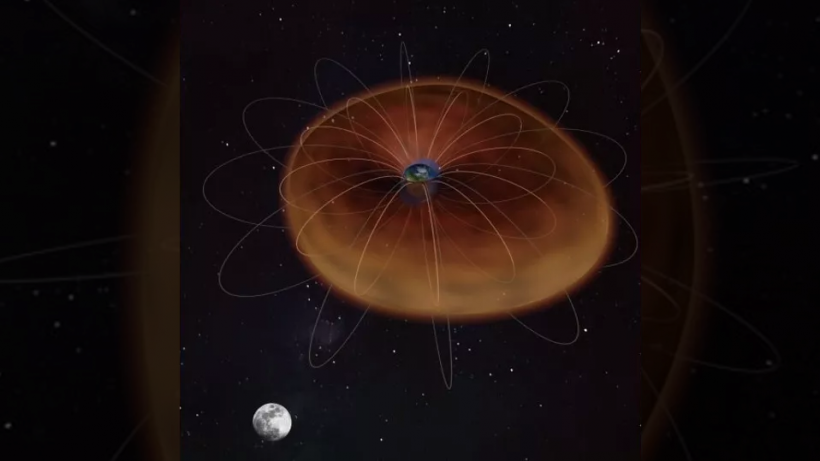A new study suggests that the moon has a previously unknown tidal force on the "plasma ocean" surrounding Earth's upper atmosphere, causing fluctuations similar to ocean tides. The scientists used more than 40 years of satellite data to track the smallest changes in the shape of the plasmasphere, the inner region of Earth's magnetosphere that protects our planet from solar storms and other types of high-energy particles.
The study was published on January 26 in the journal Nature Physics. Just above the ionosphere, which is the electrically charged portion of the upper atmosphere, is the plasmasphere, a blob of cool plasma roughly shaped like a doughnut. It is located on top of the Earth's magnetic field lines.
Because the plasma, or ionized gas, in the plasmasphere is denser than the plasma in the magnetosphere's outer regions, it sinks to the magnetosphere's bottom. The plasmapause is the boundary that separates this dense sunken plasma from the rest of the magnetosphere.
Moon's Plasma Ocean
The authors of the study mentioned that, given the cold, dense plasma properties, the plasmasphere can be regarded as a 'plasma ocean,' as well as the plasmapause defines the exterior of the ocean. The "ocean" can be warped by the moon's gravitational pull, driving its surface to rise and drop like ocean tides. Tidal forces from the moon are already known to affect Earth's oceans, crust, near-ground geomagnetic field, and lower atmosphere gas. However, no one has yet investigated whether the plasmasphere is affected by tides.
Data from more than 50,000 plasmasphere crossings by satellites from ten scientific missions, including NASA's Time History of Events and Macroscale Interactions during Substorms (THEMIS) mission, were analyzed by the researchers to answer this question. The team was able to map the precise boundary of the plasmapause in greater detail than ever before because the sensors on the satellites can detect minute changes in plasma concentrations.
There were four complete solar cycles during the period of the satellite crossings, from 1977 to 2015. The team was able to account for the impact that solar activity has on Earth's magnetosphere thanks to this information. After the influence of the sun was taken into account, it became clear that the plasma tides were most likely caused by the moon because the plasma tides followed daily and monthly patterns that were very similar to the ocean tides.

An illustration comparing the moon's impact on ocean tides (blue) with its impact on plasmasphere tides (orange)
Gravitational Changes on Earth's Electromagnetic Field
The researchers don't know for sure how the plasma tides are caused by the moon, but their current best guess is that the moon's gravity causes changes in the electromagnetic field on Earth. However, additional research is required to confirm this. The team believes that this previously unrecognized interaction between Earth and the moon could assist researchers in gaining a deeper comprehension of various other regions of the magnetosphere, such as the Van Allen radiation belts, which are responsible for capturing extremely energetic particles from the solar wind and ensnaring them in the outer magnetosphere.
The scientists also wrote that they suspect that the observed plasma tide may cause a subtle effect on the dispersal of energetic radiation belt particles, which are a known jeopardy to space-based infrastructure as well as human activities in orbit. They added that acquiring a better insight into the tides could assist in enhancing work in such areas.
Besides, the researchers want to resolve whether the moons of other planets influence the plasma in their magnetospheres. Tidal interchanges in other two-body celestial systems may be influenced by the findings, as the research team concludes, as Live Science reported.
RELATED ARTICLE: Magnetosphere Would Probably Not Provide Protection When the Sun Dies, What Would Happen Then?
Check out more news and information on Space on Science Times.














